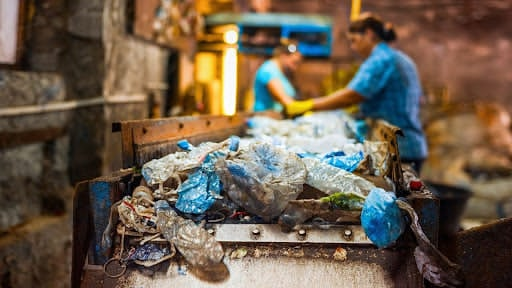In the quest towards environmental sustainability and proper use of resources, waste disposal has become the focus of attention the world over. Cities are expanding due to population growth, and the amount of trash generated is at its highest, thus requiring wiser and more efficient solutions. Such asian skills as incineration and landfilling are put in doubt due to the poor long-term benefits and harm to the environment.
Sophisticated technology is behind modern waste disposal which has assumed centre stage in the process of responding. Such inventions as AI-controlled sorting machines, intelligent bins tracking devices, and data analysis are changing the way we collect, treat and recycle garbage today.
Smart Waste Disposal Systems:
Technology is transforming the waste disposal of skips for hire companies and cities. Smart bins, high-tech containers fitted with sensors that register their fill level, provide one obvious illustration. Real-time warnings from these sensors go to garbage collecting companies, so guaranteeing bins are emptied only as needed.
This lowers carbon emissions, lowers fuel consumption, and lowers pointless travel. Moreover, digital route planning systems driven by GPS and data analysis enable garbage collection trucks to maximise their routes. Rather than adhering to set pathways, trucks can change routes depending on bin fill levels and traffic circumstances.
Recycling Gets a Tech Upgrade:
Gone are those days when garbage was sorted by hand. Recycling is also being accelerated and enhanced by advanced technologies, now also involving artificial intelligence and robotics. With the use of computer vision, infrared sensors and algorithms that can be designed on the basis of AI, machines are capable of automatically sorting out paper, glass, and metals, plastic and other materials.
This increases the quality of the recycled material through reduced pollution of the recycling streams. This is because more recycled goods will be used because better sorting creates it.
Waste-to-Energy Technologies:
It is at this point that Waste to energy (WTE) technology comes in when trash is not recycled. Such systems convert nonrecyclable waste into energy that can be utilized such as heat, biofuel energy and electricity. Despite the emerging cleaner and newer technologies, the standard methods of incinerators are still being used.
As an example, anaerobic digestion converts biogas into organic waste, food scraps or agricultural wastes. This biogas can be used in cooking, heating the homes or even powering the cars. During this process, some systems have become capable of recovering valuable byproducts like fertiliser too.
Data and AI for Better Decision-Making:
Artificial intelligence and data analytics are changing our attitude towards waste disposal. Through sensor and container, truck and user data collection and analysis towns and garbage companies will be able to predict trends and make better choices.
Among others, they can map the high-waste regions, plan seasonal peaks, and enhance pickup schedules. Predictive analysis also allows authorities to come across issues such as misses and even overflowing bins before the occurrence can take place. Artificial intelligence is also helpful in identifying inefficient work in recycling plants, recording the rate of recycling, and assessing where additional resources and training may be required.
Eco-Friendly Packaging and Product Design:
Technology is assisting us to eliminate waste at the source instead of dealing with managing them. Designers and manufacturers are creating eco-friendly packaging with the help of intelligent software and 3D printing, which uses less of the material and easier to recycle or decompose easily.
Some companies are trying edible packaging produced from organic components, such as rice starch or seaweed, to help food goods cut their plastic waste. Others are creating modular component electronics and appliances to simplify repair or recycling. Companies can greatly cut waste before it even reaches the disposal cycle by concentrating on product design.
Public Awareness Through Digital Platforms:
Public engagement is necessary for the success of any waste disposal plan. Thankfully, technology is simplifying learning and participation more than it has ever done. Instructions on how to appropriately categorise and get rid of several kinds of waste are now available on mobile apps and websites. Some apps even include barcode scanners that offer users instructions on how to recycle a particular item.
Gamification is also becoming somewhat well-known. There are sites where the efforts put into recycling are rewarded by giving points or rebates, hence it encourages recycling efforts. With the help of social media and virtual seminars, communities may promote the idea of reducing waste at home and raise awareness.
Conclusion – Waste Disposal:
Whether it is an improved collection system and automated recycling process, converting trash into energy and reducing trash at the source, technology is wreaking its own change on how we currently manage our waste. Rising public knowledge and data driven decision making help the whole waste disposal cycle to be more effective and environmentally friendly.
Embracing innovation is no longer elective; rather, it is imperative as we meet increasing environmental problems. Technology will enable us to construct a greener, cleaner future in which waste transforms into a resource rather than a load if we keep investing and working together.
